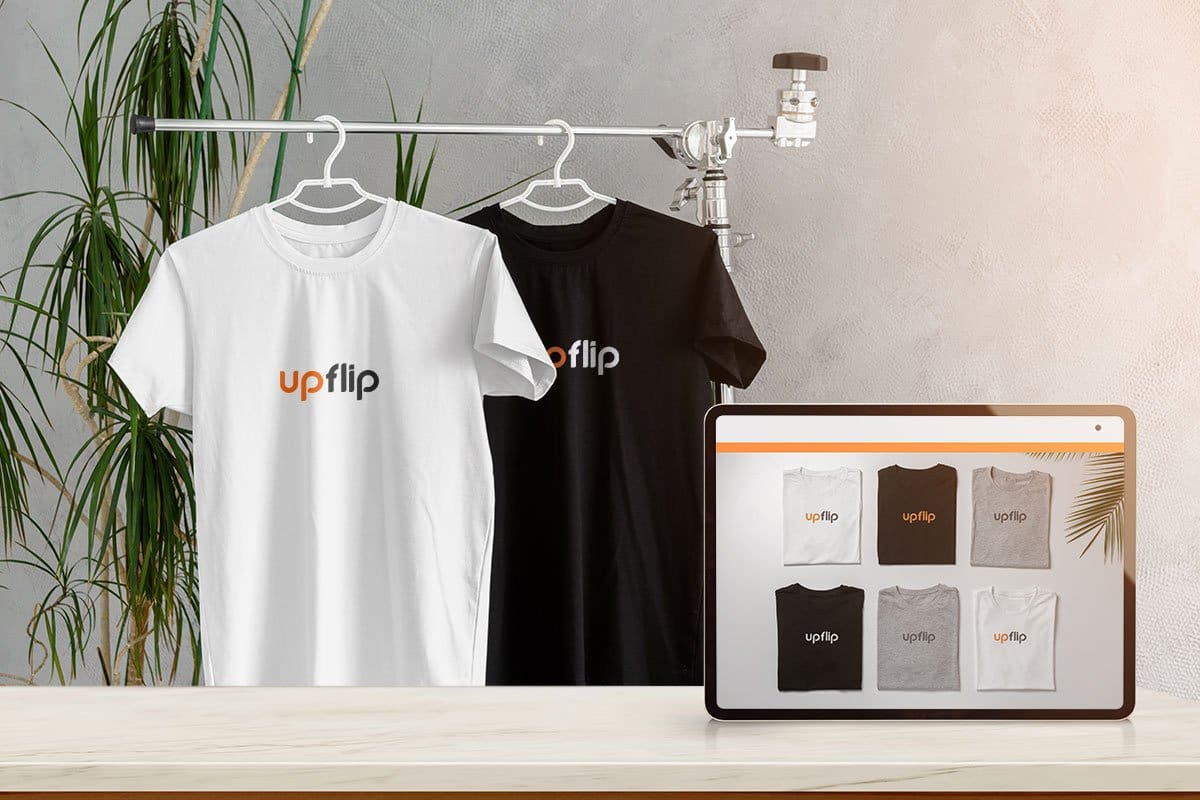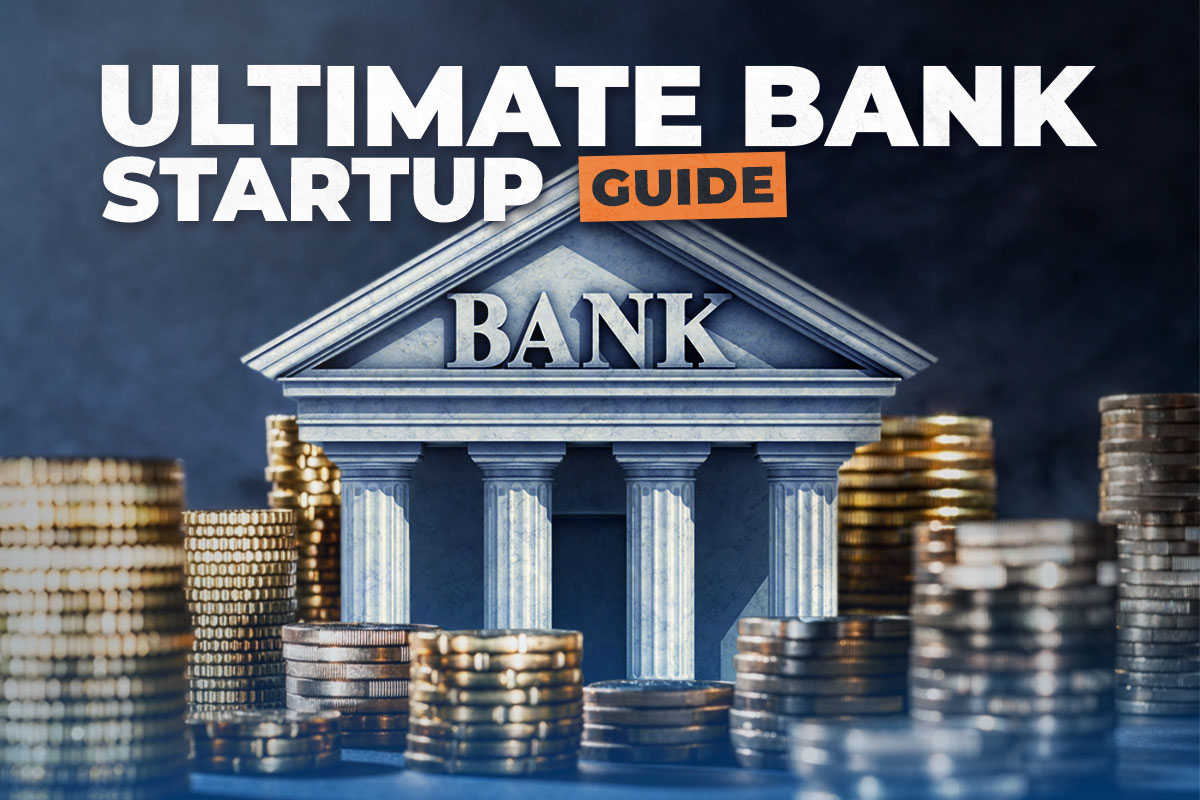Did you know that eCommerce businesses are among the most reliable businesses to start?
Unless you want to become a farmer, there’s no better industry to get into. Over 70% of eCommerce stores that opened in the last five years have stayed in business.
Advancements like dropshipping, print-on-demand, and crowdfunding have made it easier to start a successful online store, but what kind of eCommerce should you get into?
Below, you’ll find 23 eCommerce business ideas to consider. We’ll provide their income potential, startup costs, and a little bit of background to help you decide on the best option for you. Then we’ll give you tips for getting your eCommerce business started.
What Are the Best eCommerce Business Ideas?

The best eCommerce business ideas cater to current market demands, offer unique value propositions, and have the potential for scalability and growth. Keep reading for some of the best ideas for starting a successful eCommerce brand.
23 eCommerce Business Ideas You Can Start Today
Many businesses on this list have a wide range of startup costs because there are so many different ways to implement the ideas.
For instance, several can use dropshipping or print-on-demand (POD) fulfillment methods, which make startup costs of less than $1K completely achievable.
Meanwhile, if you’re creating a product (or stock of products) before selling, the costs can be much higher. Designing a product and producing the first batch can cost anywhere from a few thousand to the nearly $30 billion spent on R&D annually by Apple.
We hope this helps explain why some of the ranges in startup costs for these ideas seem so vast.
1. Niche Subscription Boxes
• Average Annual Revenue: $60K to $120K
• Average Profit Margins: 5-15%
• Startup Costs: $100-$10K
• Time to Revenue: 30-90 days
• Annual Market Growth Rate: 16.5%
• Best For: Organized, process-driven entrepreneurs with expertise in a particular product area and strong marketing skills
With this eCommerce business idea, you curate and sell subscription boxes catering to specific interests, delivering a selection of niche products regularly to customers’ doorsteps.
Popular niches for subscription boxes include:
- Book boxes
- Specialty foods, like coffee and chocolate
- Jewelry-making and craft supplies
- Gift boxes of unique or healthy snacks
- Natural cosmetics or hair care products
The best products for a subscription startup business are evergreen items that customers will need on a recurring basis. You can also target niches with passionate, learning-oriented audiences, like readers, makers, crafters, and fitness enthusiasts.
2. Personalized Products
• Average Annual Revenue: $114K+
• Average Profit Margins: 10.3%
• Startup Costs: $500-$250K
• Time to Revenue: 3+ months
• Annual Market Growth Rate: 2.0%
• Best For: Sales- and marketing-savvy fashionistas tuned into fashion trends, designers, and artists
An eCommerce website that offers customizable and personalized products, such as engraved jewelry or custom apparel, can be an excellent online business idea.
The cheapest way to start your own eCommerce business is to use a print-on-demand service. This saves you the need to worry about shipping costs or inventory management.
If you have the budget, though, you can start a more profitable eCommerce business by investing in equipment to do the customization yourself. That’s how Logo Unlimited grew into a seven-figure screen printing business. Hear their story here:
3. Health and Wellness Products
• Average Annual Revenue: $130K+
• Average Profit Margins: 5.4%
• Startup Costs: $100-$3.5M
• Time to Revenue: 6-18 months
• Annual Market Growth Rate: 0.4%
• Best For: Wellness and nutrition professionals, fitness experts, and athletes who excel at organization, sales, and customer service
A 2022 report from McKinsey & Company estimates the global market value of wellness products to be $1.5 trillion, with an annual growth rate of 5-10%.
Online stores selling health and wellness products can be highly lucrative eCommerce businesses because of this high demand. Popular product categories include:
- Supplements
- Meal replacement bars and shakes
- Fitness equipment
- Organic skin care products
- Natural and herbal health remedies
This can be an excellent eCommerce business idea on its own, or you can sell related products as an extra revenue stream for an online fitness coaching service, wellness blog, or similar online business.
4. Home and Living Accessories

• Average Annual Revenue: $3.9M+
• Average Profit Margins: 8.53%
• Startup Costs: $2,500-$3.5M
• Time to Revenue: 6-18 months
• Annual Market Growth Rate: 0.5%
• Best For: Designers, artists, makers, and crafty entrepreneurs with strong digital marketing skills
A store selling stylish home and living products—think decor, organization solutions, and smart home gadgets—is one of the top eCommerce business ideas for interior designers and other home furnishings experts.
Depending on your skills, you can build your online business from items you make yourself, or you can set up a business online with curated high-quality products made by other online or local businesses.
Like with other store ideas, the best way to build a successful brand in home accessories is to focus on a niche. This spares you the need to compete with every other eCommerce store in the home goods niche.
For example, selling kitchen and dining mats or natural, sustainably sourced products can be a profitable eCommerce business idea.
5. Eco-Friendly Products
• Average Annual Revenue: $11.5M+
• Average Profit Margins: 5.7%
• Startup Costs: $500-$250K
• Time to Revenue: 3+ months
• Annual Market Growth Rate: 1.2%
• Best For: Inventors and makers passionate about sustainability
Customers today are eager for eCommerce businesses focused on eco-friendly and sustainable products.
You can start your own eCommerce website catering to environmentally conscious consumers in a range of niches, from natural cosmetics to upcycled or natural products for the home or office.
6. Print-on-Demand Merchandise

• Average Annual Revenue: $1.6M
• Average Profit Margins: 4.3%
• Startup Costs: $500-$250K
• Time to Revenue: 3+ months
• Annual Market Growth Rate: -5.6%
• Best For: Visual artists and graphic designers with strong digital marketing skills
POD business models are trending for good reason. This is the easiest way to start an eCommerce business because you don’t need to worry about inventory or shipping—just upload your designs and let the eCommerce website take care of the rest.
Ryan Hogue was working two jobs before he started his own website selling print-on-demand products. Now he’s a multi-million dollar Amazon seller with a profitable eCommerce business that brings in more than $50,000 a month. Learn more in this interview:
7. Dropshipping Store
• Average Annual Revenue: $36K-$50K
• Average Profit Margins: 5%
• Startup Costs: $150-$500
• Time to Revenue: 1-3 months
• Annual Market Growth Rate: 25%
• Best For: Those with marketing and eCommerce skills
Dropshipping is similar to POD. With this type of eCommerce site, you partner with other eCommerce entrepreneurs to sell their products in your shop online.
Like POD, dropshipping eCommerce stores don’t need to worry about inventory or shipping. They require even less effort because you don’t need to do any designing—you literally just sell products made and shipped by others. That makes dropshipping one of the easiest and most profitable eCommerce business ideas.
Dropshipping helped Heather Johnson build her eCommerce website from a side hustle into $15,000 in monthly revenue. Hear her advice in this interview:
8. Online Craft and Handmade Goods
• Average Annual Revenue: $114K+
• Average Profit Margins: 10.3%
• Startup Costs: $500-$250K
• Time to Revenue: 3+ months
• Annual Market Growth Rate: 2.0%
• Best For: Crafters, makers, designers, and artists with strong sales and marketing skills
Even when they do their shopping online, people love high-quality products that feel personal and artfully made. An eCommerce site selling handmade goods delivers this and is the best eCommerce business for crafty and creative entrepreneurs.
You can sell just about any kind of product in eCommerce. Popular niches include jewelry, fabric crafts such as knitted or crocheted goods, woodworking items, or wedding products such as favors and gift boxes for the wedding party.
Candles are another handmade product ideal for selling online. Watch the interview below to learn how Blk Sunflower grew to six-figure sales in less than two years:
9. Pet Products and Accessories
• Average Annual Revenue: $1.6M+
• Average Profit Margins: 1.9%
• Startup Costs: $500-$250K
• Time to Revenue: 3+ months
• Annual Market Growth Rate: 0.8%
• Best For: Veterinarians, pet owners, animal lovers, inventors, and designers
From pet food to animal health care products and accessories like collars, clothing, and costumes, there are lots of potentially profitable eCommerce business ideas in the pet care niche.
Considering that the pet food industry alone was valued at $99 billion in 2022, there is a lot of money to go around in this niche, and eCommerce businesses related to pet products have a lot of growth potential.
Marshall Morris has built a very successful business in the pet care niche with I Heart Dogs, with more than 50 million followers and an average revenue of $22 million a year. Hear his story in this interview:
10. Smartphone Accessories
• Average Annual Revenue: $2.7M+
• Average Profit Margins: 11.11%
• Startup Costs: $100-$3.5M
• Time to Revenue: 6-18 months
• Annual Market Growth Rate: 2.2%
• Best For: Tech and trend experts skilled at marketing and organization
Just about everyone has a smartphone. You don’t need to sell the smartphones themselves to turn this into a great eCommerce business idea.
Another great eCommerce product idea is to sell related products, like phone cases, chargers, screen protectors, and earbuds.
This is one of those eCommerce ideas that offers a lot of flexibility and variety. If you’re a maker or artist, you can create your own designs and products. Those whose skills are more in digital marketing and sales can focus their eCommerce website on reselling products made by other people.
11. Online Grocery Store

• Average Annual Revenue: $9.3M+
• Average Profit Margins: 1.8%
• Startup Costs: $100K-$3.5M
• Time to Revenue: 6-18 months
• Annual Market Growth Rate: 0.8%
• Best For: Effective team builders, managers, and supply chain pros, as well as organized entrepreneurs with excellent customer service skills
An online grocery store is a unique business plan that can offer a lot of growth potential. In the past, the majority of people bought groceries from local stores, but the rise of food delivery has started to shift that. eCommerce platforms offer shoppers more convenience and choice and are rising in popularity.
One great thing about the grocery niche is that there’s a huge number of existing customers. After all, everybody needs food—you just need to convince them to buy it from your eCommerce website to grow a successful business.
12. Vintage and Antique Goods
• Average Annual Revenue: $60K-$120K
• Average Profit Margins: 5-15%
• Startup Cost: $100-$1K
• Time to Revenue: 30-90 days
• Annual Market Growth Rate: -9.3%
• Best For: Shoppers, collectors, and thrifters
Not every great eCommerce product idea is one you make from scratch or sell new. Vintage items and collectibles have long been among the most popular eCommerce industries.
Getting your inventory for this kind of store can be very affordable, too. You can buy items from thrift stores, yard sales, flea markets, or storage unit auctions at a great price, then resell them for what they’re really worth to make a profit.
That’s how Mike Wilson got started with Golden State Pickers, and today he makes upwards of $30,000 a month as an eBay reseller. Learn how he grew his business here:
13. Tech Gadgets and Accessories

• Average Annual Revenue: $2.3M
• Average Profit Margins: 5.5%
• Startup Costs: $500-$250K
• Time to Revenue: 3+ months
• Annual Market Growth Rate: 0.6%
• Best For: Electronics, technology, and repair pros; detail-oriented and mechanically-minded entrepreneurs
For tech-minded entrepreneurs, selling gadgets and accessories, like headphones, smartwatches, and tech-related gifts, is among the top eCommerce ideas.
The top trending eCommerce product idea categories related to tech include:
- Screen protectors
- Bluetooth headphones
- Computer and phone cases
- Wireless charging stations
- Drones
- Wearable devices
Using an online store builder platform, you can quickly get up and running and start a profitable eCommerce business in any of the above categories.
14. Digital Products and Courses
• Average Annual Revenue: $234K+
• Average Profit Margins: 5.8%
• Startup Costs: $100-$1K
• Time to Revenue: 1-3 months
• Annual Market Growth Rate: 1.1%
• Best For: People with niche or in-demand skills and expertise
Lots of people turn to the internet when they want to learn a new skill. This puts online courses among the top eCommerce business ideas—and you don’t actually need to be an expert in the niche to get started with an online education business.
Jacques Hopkins played piano as a hobby before starting Piano in 21 Days. Now, he makes $40,000 a month selling his online courses, giving him the flexibility and freedom he lacked as an engineer. Hear his story in this podcast:
One great thing about starting an online education business: It doesn’t cost much to start. Jacques’s initial budget was around $150 a month. While it can take a lot of time and effort to create an online course or digital product, once it’s ready to sell, the time investment is minimal.
As far as how to reach customers, you can sell courses through your own website or go through one of the online learning platforms that already exist, like Kajabi, Skillshare, or Teachable.
15. Online Plant Nursery
• Average Annual Revenue: $2.8M+
• Average Profit Margins: 3.4%
• Startup Costs: $1K-$100K
• Time to Revenue: 3+ months
• Annual Market Growth Rate: 0.8%
• Best For: Gardeners and plant experts with strong networking and marketing skills
Not all eCommerce business ideas are techy. For those who love the outdoors and have a green thumb, you can start an online store selling seeds, tools, and other gardening accessories.
Another option is to sell the things you grow. Rane Roatta started a tropical fruit farm from scratch and grew it to a seven-figure revenue, selling mostly online. Hear how he did it in this interview:
16. Athleisure and Activewear
• Average Annual Revenue: $1.6M+
• Average Profit Margins: 2.9%
• Startup Costs: $100K-$3.5M
• Time to Revenue: 6-18 months
• Annual Market Growth Rate: 0.8%
• Best For: Creative athletes, fitness experts, fashion designers, and sports and fitness enthusiasts
The global apparel market for activewear was valued at over $319 billion in 2022, and that’s expected to soar to over $450 billion by 2028.
A clothing business selling this niche apparel product is among the top eCommerce business ideas for entrepreneurs who like both fashion and fitness. This kind of eCommerce store can also make a nice supplement to an online fitness coaching business or YouTube fitness influencer.
17. Online Beauty Store

• Average Annual Revenue: $1.4M+
• Average Profit Margins: 5.7%
• Startup Costs: $500-$250K
• Time to Revenue: 3+ months
• Annual Market Growth Rate: 1.2%
• Best For: Makeup artists, beauty influencers, cosmetic chemists, and hair and skin care experts
If you’re looking for niche examples with high profit potential, the beauty industry is a great choice. Revenue for beauty and personal care products exceeded $625 billion in 2023, and there are a variety of eCommerce business ideas within the niche to choose from.
Charmaine Nicole founded her skin and hair care product lines based on her personal challenges finding products designed for people of color. Today, it makes more than $75,000 a month. Hear her story in this interview:
18. Smart Home Devices
• Average Annual Revenue: $2.3M
• Average Profit Margins: 5.5%
• Startup Costs: $500-$250K
• Time to Revenue: 3+ months
• Annual Market Growth Rate: 0.6%
• Best For: Electronics, technology, and repair pros; detail-oriented and mechanically-minded entrepreneurs
If you’re wondering where to find eCommerce business ideas, one place to start is right at home. Smart home devices have surged in popularity, and you can start a profitable eCommerce business selling these niche products to eager consumers.
You don’t need to be a programmer or inventor to start this business, either. You can build off of existing control systems, like Alexa and Google Home, to bring customers new ways to make their day-to-day life more convenient.
19. Online Toy Store

• Average Annual Revenue: $1.1M+
• Average Profit Margins: 11.79%
• Startup Costs: $500-$250K
• Time to Revenue: 3+ months
• Annual Market Growth Rate: 0.8%
• Best For: Parents, educators, collectors, gamers, and other fun-loving entrepreneurs
Entertainment is one of the best eCommerce business ideas, but it’s often overlooked—and that makes it an excellent niche for people looking to open unique online stores.
There are a lot of ways you can go with this kind of online store. Some ideas of things to sell include:
- Educational toys for kids
- Collectible or antique toys
- Eco-friendly toys made from sustainable materials
- Unique board games
- Pet toys
- Supplies for tabletop gamers (dice, figurines, etc.)
20. Remote Work Accessories
• Average Annual Revenue: $2.3M
• Average Profit Margins: 5.5%
• Startup Costs: $500-$250K
• Time to Revenue: 3+ months
• Annual Market Growth Rate: 0.6%
• Best For: Electronics, technology, and repair pros; detail-oriented and mechanically-minded entrepreneurs
In 2023, 12.7% of employees work from home, and another 28.2% work a hybrid schedule.
That’s a lot of potential customers for an eCommerce site selling products tailored to remote workers, such as ergonomic office furniture, noise-canceling headphones, and home office gadgets.
21. Personal Safety Equipment

• Average Annual Revenue: $15.9M+
• Average Profit Margins: 4.7%
• Startup Costs: $500-$3.5M
• Time to Revenue: 6-18 months
• Annual Market Growth Rate: 5.90%
• Best For: Entrepreneurs in healthcare, manufacturing, and similar industries that use protective gear
During the pandemic, there was a sharp increase in the need for personal safety equipment like face masks and gloves.
The fact is, though, that lots of people need these items on a daily basis, and not just in the medical field. Gloves, goggles, face shields, head protection, and ear protection are necessary tools in a range of trades, from house cleaners and waste management pros to construction workers, welders, and athletes.
If you’re an inventor, you can launch a startup business idea to fill a gap in the current personal safety equipment market. Selling existing products targeted to a specific niche can also be an excellent eCommerce business, especially if you have expertise in what that target customer needs from their gear.
22. Wedding Supplies and Attire
• Average Annual Revenue: $670K+
• Average Profit Margins: 11.79%
• Startup Costs: $1,000-$3.5M
• Time to Revenue: 6-18 months
• Annual Market Growth Rate: 1.1%
• Best For: Designers, event planners, and fashion and trend experts
The global market for the wedding industry is huge, generating over $160 billion in revenue in 2020.
People want their big day to be perfect, and you can help people create that dream wedding experience by starting a wedding supplies business online.
Like with other options on this list, there are multiple niches to explore. Just to give some niche examples: Fashion designers can make handmade wedding gowns, or a graphic designer could create personalized wedding favors.
23. Books and Journals

• Average Annual Revenue: $960K+
• Average Profit Margins: 12.03%
• Startup Costs: $1,000-$3.5M
• Time to Revenue: 6-18 months
• Annual Market Growth Rate: 2%
• Best For: Writers, editors, educators, and creative entrepreneurs with strong communication skills
An online bookstore can be an excellent eCommerce business idea for someone who loves reading, writing, and learning.
You can create the books yourself and sell them as physical copies or digital products, or you can curate a list of books written by others that all center on a specific niche.
There are other unique business ideas in this niche, too. For example, Case Kenny turned his expertise and passion for mental health into a guided mindfulness journal business, and he has made more than $5.3 million in revenue since he launched in 2020. Hear his story in this interview:
How to Create Your Own Online Store
- Choose a platform. There are many platforms to choose from, such as Shopify, WooCommerce, and BigCommerce. Each platform has its pros and cons, so do some research to find the one that best suits your needs.
- Choose a domain name and web hosting. Your domain name is your website’s address, and web hosting determines where your online files will be stored. You can find affordable domain names and web hosting plans from DreamHost.
- Design your store. Once you have a platform and web hosting, you can start designing your store. Choose a theme or template, then add your categories and pages.
- Add products. Add your products to your store. Include images, descriptions, and prices. You’ll also have the option to set up shipping and payment options. If you need funds for inventory, try Borrow Nation.
- Promote your store. Once your store is up and running, you need to promote it so people can find it. You can do this through social media, search engine optimization, and paid advertising. Try Ad Creative AI to simplify the process of creating promotional content.
Creating your own online store requires significant effort, but it can also be very rewarding. By following these steps, you can create a successful online store that sells your products to customers all over the world.
Is eCommerce Worth It?

It absolutely can be!
As you’ll see from the many eCommerce entrepreneurs interviewed by UpFlip, starting your own eCommerce business can help you achieve a range of personal or professional goals, whether you want to supplement brick-and-mortar sales or find a more flexible way to make a living so you can ditch your day job.
Which eCommerce Business Idea Do You Like?
Now that you’ve seen bunches of online store ideas, which one strikes your fancy? Do you have ideas for eCommerce businesses that weren’t on the list? We’d love to hear about your eCommerce entrepreneurial journey!








